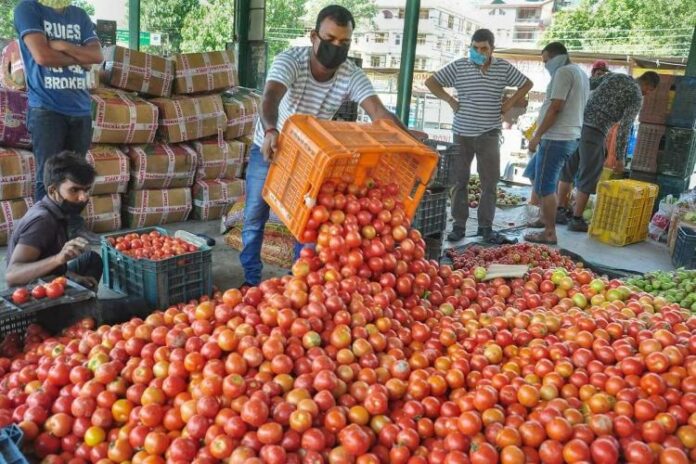Future Outlook: What to Expect in the Tomato Market
Tomato prices have increased in last 18 days in Southern states of Karnataka, Andhra Pradesh, Tamil Nadu, Kerala and also in Maharashtra due to the intense heat wave.
According to Department Of Consumer Affairs, the average price of this Rabi crop is up 27 per cent per cent to Rs 51 per kg on Tuesday, June 18, 2024 from Rs 40 per kg on June 1, 2024 in these states. Prices in the retail market have gone up to Rs 80 per kg in Bengaluru.
Tomato Prices in South Go North!
Tomato wholesale prices have doubled in the last 15 – 20 days in South India. The average tomato price in wholesale markets has reached ₹40-50 per kg in the region.
What led to the tomato price hike?
Tomato prices are on the rise because of lower supply in the market. Intense heat wave across the country has damaged the Rabi crop and hence the lower supply. South India has seen record breaking heat in the current summer season with average temperature soaring up to 37.2 degree Celsius. According to the India Meteorological Department, South India had recorded its second highest maximum temperature in last 123 years in April 2024.
When is tomato cultivated in India?
Tomatoes, a staple ingredient in many cuisines, have been grabbing headlines lately due to fluctuating prices in the market. The demand for this versatile fruit continues to rise, but various factors are influencing its future outlook. With climate change posing threats to cultivation and supply chains, consumers are left wondering what to expect in the tomato market.
Tomato prices have been a topic of concern, particularly in India, where fluctuations in rates have been observed. Commodity traders are warning consumers that prices could further escalate in North India in the coming months. This is primarily due to the significant impact of weather conditions on tomato cultivation, leading to a potential shortage in supply.
Climate change can significantly affect the tomato market, as extreme weather events such as droughts or heavy rains can damage crops. These disruptions in production can lead to increased prices and scarcity in the market. Furthermore, supply chains are also vulnerable to disruptions, leading to delays and further impacting the availability of tomatoes for consumers.
In the face of these challenges, it is crucial for consumers to stay informed and exercise flexibility in their culinary choices. Exploring alternative ingredients or embracing seasonal produce can help mitigate the impact of rising tomato prices. Additionally, supporting local farmers and adopting sustainable practices can contribute to a more resilient tomato market in the long run.
In conclusion, the future outlook for the tomato market is uncertain, with prices likely to fluctuate due to climate change and other factors. Being aware of these dynamics and adapting our culinary habits accordingly will enable us to navigate these challenges. By making informed choices and supporting sustainable practices, we can ensure a stable and accessible tomato market for years to come.
In India, tomato is usually sown in mid-November or December and harvested in April-May in parts of Maharashtra, Karnataka and Andhra Pradesh. Blistering temperature in April and subsequent months played spoilsport while harvesting the crop. Andhra Pradesh is the largest tomato producing state in India.
Tomato prices in North India remain stable
However, tomato prices have not increased in North India. In fact, the heat wave has caused early ripening of tomato plants leading to oversupply in the market in the market. However, commodity traders have warned that considering the tomato price trend in India, prices can go up in North India as well in July.




















